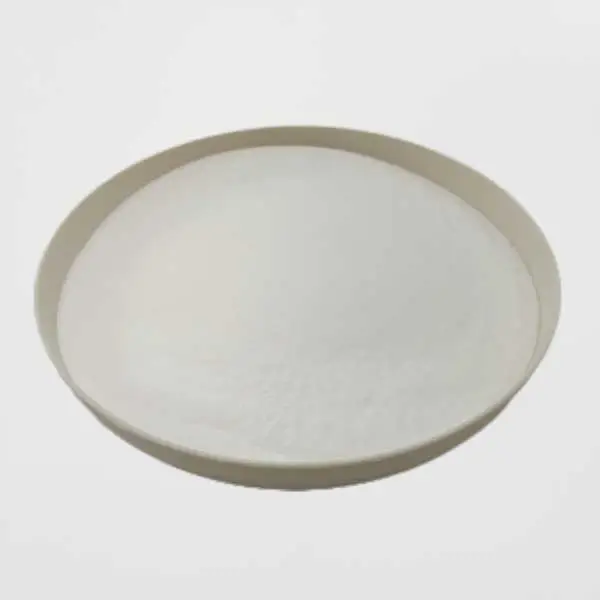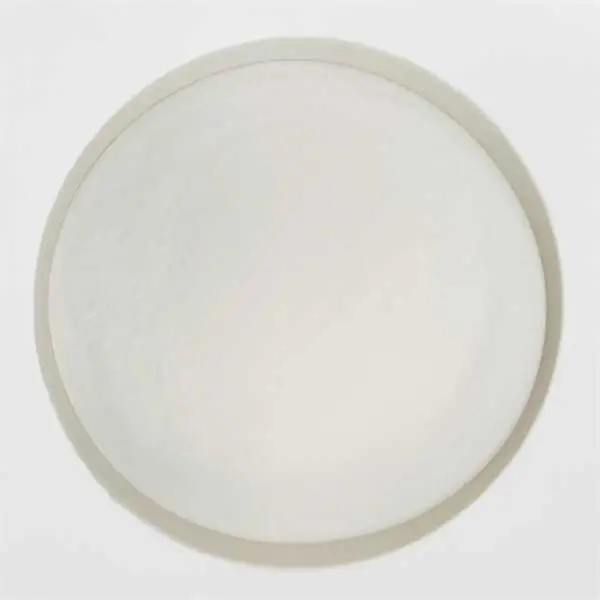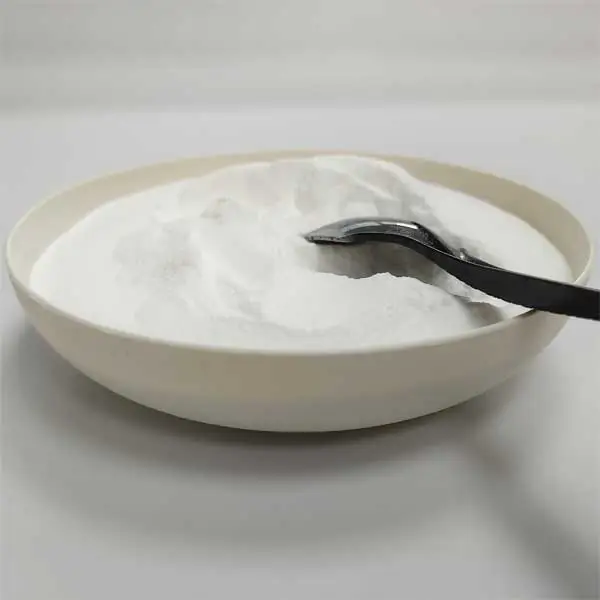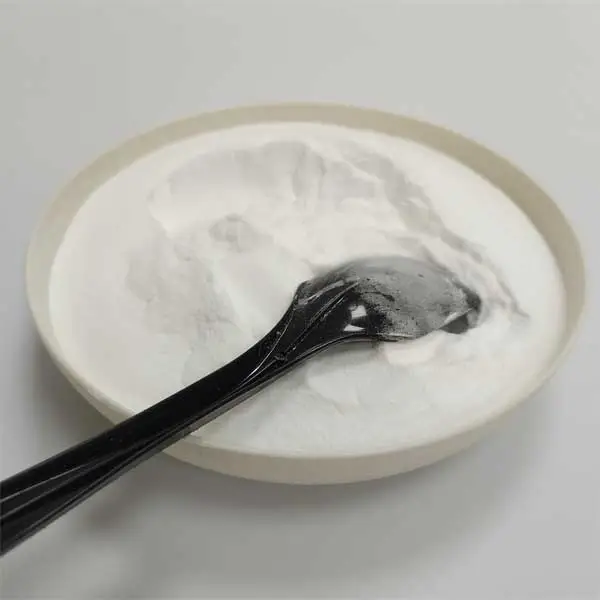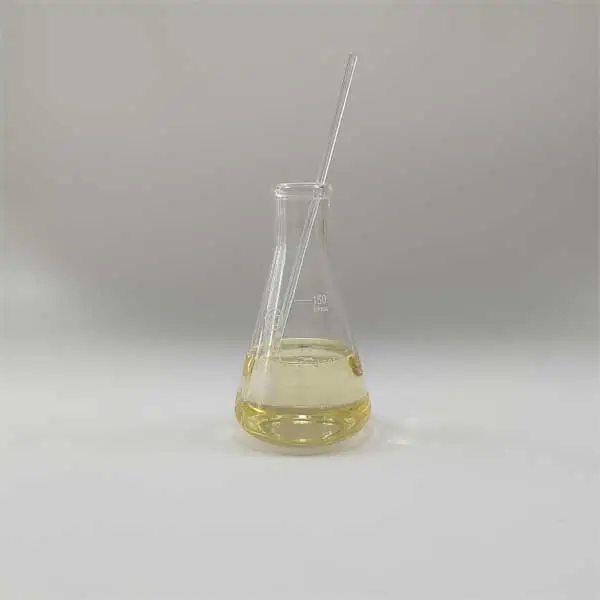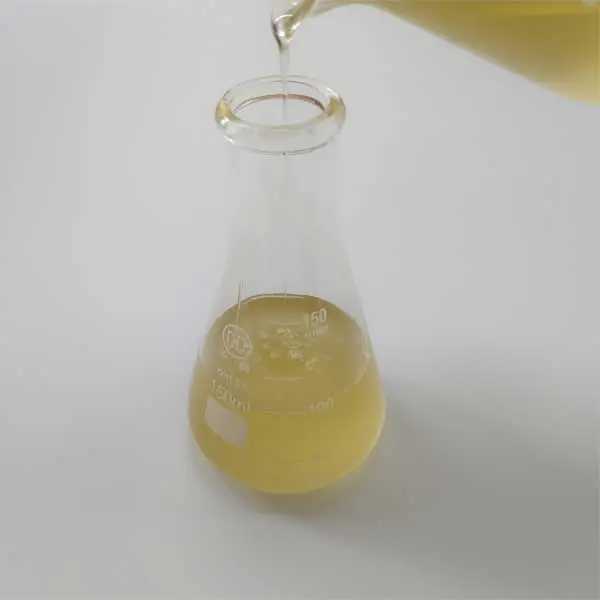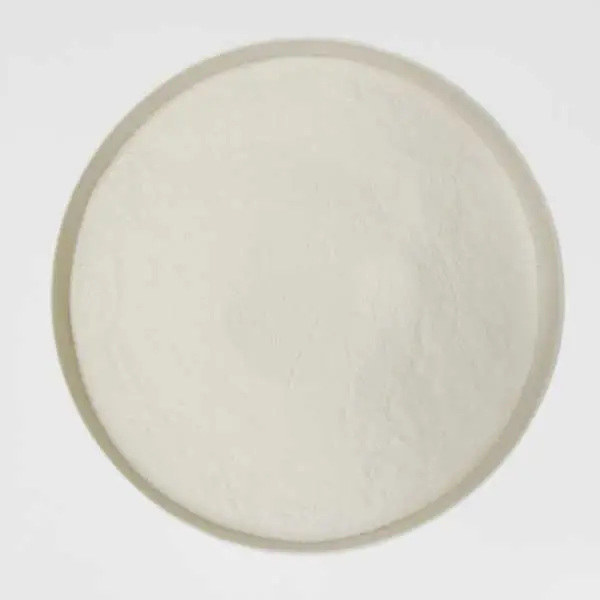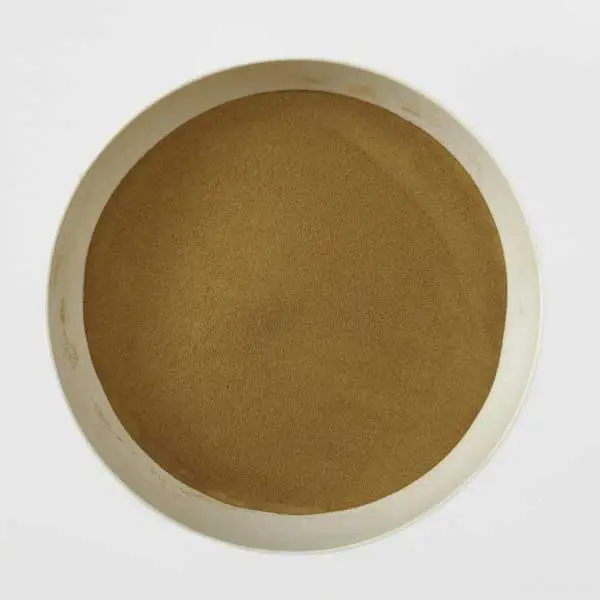Sulfonated Melamine Formaldehyde Resin
Sulfonated Melamine-based superplasticizers are dry, free-flowing powders produced through the spray-drying of sulfonated polycondensation products based on melamine. SMF powder superplasticizer is particularly well-suited for reducing water content and enhancing the plasticity of cement and calcium sulfate-based blended materials. It maintains a white appearance and exhibits robust water-reducing properties without introducing air. With its low chloride ion content, it offers excellent compatibility with various types of cements, ultimately contributing to the improvement of early strength, impermeability, workability, water retention, and steam curing capabilities. Jufu Chemical is one of the leading sulfonated melamine formaldehyde manufacturers in China. RFQ Today!
Specification of Sulfonated Melamine Formaldehyde Resin(SMF Powder)
Appearance | White powder |
Moisture (%) | ≤5 |
Bulk density (kg/m³) | 400-700 |
pH (20% solution) | 7-9 |
Chloride Content (%) | ≤0.05 |
Total Alkali (%) | ≤10 |
Sodium Sulfate (%) | ≤5 |
Water Reducing Ratio In Concrete test (%) | 14 Min |
Application of Sulfonated Melamine Formaldehyde Resin(SMF Powder)
1. Ceramic and cement dispersant
Sulfonated melamine formaldehyde resin is a good anionic surfactant with surface activity and other valuable properties. It is often used as a high-efficiency dispersant or water reducer in ceramics, cement, and concrete at home and abroad. Its mechanism of action is mainly: this type of water reducing agent has the function of adsorption, dispersion and lubrication, so it can improve the workability of concrete with less water, so as to achieve the purpose of water reduction. As the water-mixing ratio decreases, the pores in the concrete decrease, making the cement denser, increasing its strength, and reducing the amount of cement used. Due to the infiltration of water reducing agent, the growth of cement hydration products is slow, and the network structure of sulfonated concrete is denser, which is conducive to the increase of medium and long-term strength of concrete.
2. Paper Industry
The principle and performance characteristics of being used as a wet strengthening agent and water-repellent agent Because sulfonated melamine-formaldehyde resin contains methylol, it can form an etherified structure between fiber bundles, and the cross-linking between different molecules produces water resistance, making the paper It can achieve the effect of humidifying strength, so it is mainly used as wet strengthening agent and water-resistant agent in the paper industry.
3. As wood adhesive
In the wood industry, sulfonated melamine formaldehyde resins are mainly used as adhesives. Due to its greater chemical activity, when it penetrates into wood products, the cross-linking and hardening speed is faster, and it can be heat-hardened or room-temperature hardened without other hardeners, thereby producing a bonding effect. Due to its good thermal stability, water resistance and chemical resistance, it is widely used in wood-based panels, wood, construction, paper packaging and other fields.
4. Finishing agent for fabric printing and dyeing
In the textile industry, sulfonated melamine formaldehyde resin and its derivatives are important raw materials for preparing fabric printing and dyeing finishing agents. Its mechanism of action is that it can be used as a surface modifier and coupling agent for fabrics, thereby improving the anti-shrinkage, anti-wrinkle, and washable properties of cotton fabrics.
Advantages of Using Sulfonated Melamine Formaldehyde (SMF) Resin
| Advantage | Description |
| High Water Reduction | Reduces water content in concrete by up to 25%, leading to stronger, denser concrete. |
| Enhanced Workability | Maintains fluidity with less water, improving ease of pouring and finishing. |
| Increased Strength & Durability | Improves compressive strength and resistance to cracking and wear. |
| Faster Construction | Speeds up mixing, pouring, and finishing, reducing project timelines. |
| Improved Compatibility | Compatible with various admixtures for customized concrete formulations. |
| Thermal Stability | Performs well in high-temperature environments. |
| Versatility | Applicable in diverse fields like textiles, adhesives, and oil drilling. |
| Improved Appearance | Reduces surface defects, resulting in a smoother, more uniform finish. |
| Cost Savings | Lowers overall construction costs due to less water usage and reduced defects. |
| Eco-Friendly | Minimizes water consumption and improves building lifespan, reducing environmental impact. |
| Resistance to Chemical Attacks | Improves resistance to corrosion from sulfates, chlorides, etc. |
Packaging and Shipping of Sulfonated Melamine Formaldehyde Resin(SMF Powder)
Woven bag lined with one or two layers of film bags. 25kg/bag
Storage: Store in a ventilated, dry and cool room.
Storage period: 6 months from the date of production. It should be tested when due. Eligible products can still be used.
Shipping Precautions: Avoid moisture, heat, dirt and damaged packaging.
FAQs on Sulfonated Melamine Formaldehyde Resin (SMF)
What is Sulfonated Melamine Formaldehyde Resin (SMF)?
Sulfonated Melamine Formaldehyde Resin (SMF) is a high-performance polymer used primarily as a superplasticizer in concrete and cement applications. It enhances the workability and strength of concrete by dispersing cement particles more effectively, reducing the water-cement ratio without compromising the mixture's fluidity.
What are the main applications of SMF?
SMF is mainly used in the construction industry for:
Concrete admixtures: To improve workability, strength, and durability.
Cement additives: Enhancing performance characteristics.
Ceramic industry: As a dispersant in ceramic processing.
Textile industry: As a formaldehyde-free finishing agent.
How does SMF work as a superplasticizer?
SMF works by adsorbing onto the surface of cement particles and imparting a negative charge, which repels the particles from each other. This dispersion of cement particles increases the workability of the concrete mix without the need for additional water, thereby enhancing its strength and durability.
What are the benefits of using SMF in concrete?
The benefits of using SMF in concrete include:
Improved workability and fluidity.
Higher early and ultimate strength.
Reduced water-cement ratio.
Enhanced durability and longevity.
Better surface finish.
Is SMF compatible with other concrete admixtures?
Yes, SMF is generally compatible with other concrete admixtures such as air-entraining agents, retarders, and accelerators. However, compatibility testing is recommended to ensure optimal performance and avoid any adverse interactions.
What are the physical properties of SMF?
Typical physical properties of SMF include:
Appearance: White to off-white powder.
Solubility: Highly soluble in water.
pH (10% solution): Around 7-9.
Density: Approximately 0.5-0.7 g/cm³.
How should SMF be stored?
SMF should be stored in a cool, dry place, away from direct sunlight and moisture. It should be kept in tightly sealed containers to prevent contamination and degradation.
Are there any safety concerns associated with SMF?
SMF is generally considered safe when handled properly. However, it is recommended to use personal protective equipment (PPE) such as gloves, masks, and goggles to avoid inhalation or skin contact. Always refer to the Material Safety Data Sheet (MSDS) for detailed safety and handling instructions.
Can SMF be used in all types of concrete?
SMF is versatile and can be used in various types of concrete, including high-strength concrete, precast concrete, and self-compacting concrete. However, the dosage and specific formulation may need to be adjusted based on the application requirements.
What is the typical dosage of SMF in concrete mixtures?
The typical dosage of SMF in concrete mixtures ranges from 0.2% to 2.0% by weight of cement, depending on the desired properties and specific application requirements. It is advisable to conduct laboratory tests to determine the optimal dosage for a particular mix design.
Sulfonated Melamine Formaldehyde Resin Technical Support

 English
English 
